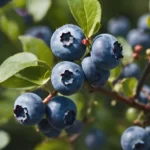Cucumbers, with their crisp texture and refreshing taste, are a favorite among gardeners in Missouri. Planting cucumbers at the right time is crucial for a bountiful harvest. Missouri’s varied climate poses unique challenges and opportunities for cucumber cultivation, making understanding the optimal planting time essential. This guide will explore the best practices for planting cucumbers in Missouri, ensuring a successful and fruitful gardening season.
Cucumbers
Cucumbers (Cucumis sativus) are warm-season vegetables that thrive in sunny, well-drained environments. There are several varieties suitable for Missouri’s climate, including slicing, pickling, and bush types. Each variety has its specific growth requirements, but all cucumbers generally need plenty of sunlight and consistent watering. Choosing the right variety can make a significant difference in your gardening success.
Missouri’s Growing Conditions
Missouri’s climate varies significantly across the state, falling into several USDA hardiness zones. These zones range from 5b in the north to 7a in the south, impacting the length and timing of the growing season. Gardeners in Missouri must consider these zones when planning their vegetable gardens, as the local climate will influence when to plant cucumbers for optimal growth.
Best Time to Plant Cucumbers in Missouri
In Missouri, the timing for planting cucumbers is primarily determined by soil temperature and the last expected frost date. Cucumbers are sensitive to cold, and planting should only commence once the danger of frost has passed and the soil has warmed sufficiently. Typically, in Missouri, this period falls around mid to late spring. For most parts of Missouri, planting cucumbers is recommended from late April to early June. Gardeners should adjust this timing based on their specific regional climate, especially in the northern and southern parts of the state.
Preparing to Plant
Preparing your garden before planting cucumbers is essential for healthy growth:
- Soil Preparation: Cucumbers prefer a well-draining soil rich in organic matter. Amend the soil with compost or aged manure to improve fertility and structure.
- Choosing a Location: Select a planting site that receives full sunlight for at least 6 to 8 hours a day. Cucumbers also need protection from strong winds.
- Improving Drainage: If your garden has heavy clay soil, consider raising the beds to improve drainage, as cucumbers do not fare well in waterlogged conditions.
Planting Process
When it’s time to plant:
- Planting Seeds or Seedlings: You can start cucumbers from seeds or purchase seedlings. If starting from seeds, sow them directly in the ground, as cucumbers do not transplant well.
- Spacing and Depth: Plant cucumber seeds about 1 inch deep, with about 18 to 36 inches between plants, depending on the variety. For bush types, spacing can be on the lower end, while vining types need more space.
- Initial Watering: After planting, water the soil thoroughly. Consistent moisture is important, but avoid overwatering to prevent root rot.
Caring for Cucumbers
Proper care is crucial for cucumbers to thrive in Missouri’s climate:
- Watering: Cucumbers require consistent moisture, especially during flowering and fruit development. Provide 1 to 2 inches of water per week, using drip irrigation or a soaker hose to minimize leaf wetness and prevent diseases.
- Fertilizing: Apply a balanced fertilizer after the plants have established and again when they start to flower. Be cautious with nitrogen-heavy fertilizers, as they can promote foliage growth at the expense of fruit production.
- Pruning and Training: For vining cucumber varieties, consider using a trellis or support system to save space and keep fruits off the ground. Prune excess foliage to improve air circulation and sunlight exposure to the fruits.
- Pest and Disease Management: Watch for common cucumber pests like cucumber beetles and aphids. Employ organic or chemical controls as needed. Rotate crops each year to prevent disease buildup in the soil.
Harvesting Cucumbers
Knowing when to harvest cucumbers is essential for the best flavor and texture:
- Signs of Maturity: Harvest cucumbers when they are medium-sized, firm, and the skin is a bright green color. Overripe cucumbers can become bitter and seedy.
- Harvesting Technique: Use a knife or clippers to cut the cucumbers off the vine. Pulling or twisting can damage the plant and reduce future yield.
- Frequency: Check plants every other day as cucumbers can grow rapidly. Regular harvesting encourages the plants to produce more fruit.
Conclusion
Planting cucumbers in Missouri requires understanding the local climate, preparing the garden adequately, and providing ongoing care. By following these guidelines, Missouri gardeners can enjoy a plentiful harvest of crisp, tasty cucumbers. Whether for fresh salads, pickling, or simply enjoying raw, cucumbers are a rewarding addition to any Missouri garden, bringing freshness and flavor to the summer season.



